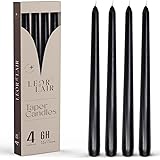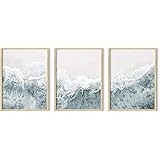The quest for efficiency and innovation in construction and electrical work is a continuous journey, a principle often exemplified by techniques designed to make tasks feel like “light work.” As seen in the video above, modern approaches and materials are transforming how projects are undertaken, particularly when it comes to the versatile application of PVC in construction, electrical installations, and even interior design.
The Evolution of PVC in Modern Construction
Once primarily associated with plumbing, PVC, or polyvinyl chloride, has become an indispensable material across various facets of modern construction. Its applications are expansive, ranging from robust piping systems to sophisticated electrical conduits. This widespread adoption is attributed to a combination of its inherent properties and the technological advancements in its manufacturing and application.
1. Initially, PVC’s durability and resistance to corrosion were the primary drivers for its use. It offered a stark contrast to traditional materials that might degrade or require frequent maintenance. Today, its role as a protective casing for electrical wiring is considered critical.
2. In an analogy, PVC can be thought of as the highly adaptable nervous system of a building, safely encasing and guiding the vital electrical signals that power our homes and workplaces. This material’s ability to withstand environmental stressors, such as moisture and chemicals, ensures the longevity and safety of electrical systems.
What Makes PVC “Light Work” for Electrical Installations?
The term “light work” is frequently associated with tasks that are streamlined, efficient, and less strenuous than their traditional counterparts. When it comes to efficient PVC electrical installation, this concept is clearly demonstrated. The material’s ease of manipulation, combined with a wide array of specialized fittings, significantly reduces the time and effort required for complex wiring projects.
1. **Ease of Fabrication:** Unlike metal conduits, which often require specialized tools for bending and cutting, PVC can be cut with standard hand tools and heated for precise bends. This flexibility is invaluable on a job site, allowing for custom routing without extensive equipment.
2. **Lightweight Nature:** The reduced weight of PVC compared to metallic alternatives contributes directly to easier handling, transport, and overhead installation, decreasing physical strain on installers and potentially speeding up project timelines. This aspect alone makes an efficient PVC electrical installation more appealing.
3. **Simplified Joining:** Solvent cements are utilized to create strong, watertight, and airtight joints, a process that is often faster and less labor-intensive than threading metal pipes or welding. Such straightforward methods allow for significant time savings during the PVC construction phase.
Advantages of PVC Electrical Conduit
Several distinct advantages elevate PVC as a preferred material for electrical conduit:
- **Corrosion Resistance:** It is unaffected by most chemicals and moisture, preventing rust and degradation that can compromise wiring over time.
- **Non-Conductive Properties:** As an insulator, PVC provides an additional layer of safety, reducing the risk of electrical shock if wires become damaged inside the conduit.
- **Flame Retardant:** Many PVC formulations are designed to self-extinguish, adding a crucial safety feature in the event of an electrical fire.
- **Impact Resistance:** While not as rigid as steel, PVC conduit offers sufficient protection against physical damage in many environments.
- **Cost-Efficiency:** Generally, PVC materials and their installation are more economical than metal conduit systems, making it a budget-friendly option for various construction projects.
Integrating PVC into Interior Design: Beyond Functionality
The scope of PVC in interior design often extends beyond its purely functional role. While its primary purpose in electrical work is to protect and organize wiring, creative approaches are sometimes adopted to ensure that functionality also aligns with aesthetic considerations. The visual impact of exposed conduit or wiring is a crucial point for interior designers.
1. **Concealed Aesthetics:** For a seamless look, PVC conduit is frequently embedded within walls, floors, or ceilings. This method of electrical wiring ensures that the practical aspects of power delivery are kept entirely out of sight, preserving the clean lines and intended aesthetic of a space.
2. **Paintable Surfaces:** When exposed runs of conduit are unavoidable or intentionally incorporated into an industrial or modern design scheme, PVC’s surface can often be painted to match or complement the surrounding decor. This allows for the integration of necessary infrastructure without creating a visual distraction. An effectively routed and color-matched PVC conduit can, in some cases, blend into the background as effortlessly as a well-tailored suit.
3. **Thoughtful Routing:** The strategic placement of conduit runs can become a subtle design element, guiding the eye or emphasizing architectural features, rather than being an eyesore. This level of detail is often seen in commercial or loft-style spaces where utilities are exposed by design.
Best Practices for Efficient PVC Installation
Achieving truly “light work” in PVC electrical installation relies heavily on meticulous planning and adherence to best practices. An organized approach not only saves time but also ensures safety and compliance with electrical codes.
1. **Detailed Planning and Layout:** Before any cutting or assembly begins, a comprehensive plan for conduit routing is established. This blueprint outlines the exact path for each run, the location of junction boxes, and the types of fittings required. It is akin to a skilled architect’s blueprint, anticipating every curve and connection.
2. **Precise Cutting and Joining:** Clean, square cuts are made to ensure optimal fit within fittings, preventing gaps that could compromise the integrity of the system. Solvent cement is then applied correctly, ensuring a strong, permanent bond that prevents moisture ingress and maintains the structural integrity of the conduit.
3. **Proper Support and Securing:** PVC conduit must be adequately supported along its entire length, typically with clamps or straps at specified intervals. This prevents sagging, especially in warmer temperatures, and protects the conduit from physical stress. Secure fastening is paramount for any reliable electrical installation.
4. **Consideration for Future Access:** While designed for permanence, intelligent installation also accounts for potential future maintenance or upgrades. This might involve strategically placed access points or larger conduit sizes to accommodate additional wires down the line, ensuring future scalability of the technology infrastructure.
Safety Considerations in PVC Electrical Work
No discussion of electrical installation would be complete without emphasizing safety. While PVC is inherently safer in many respects due to its non-conductive nature, specific precautions must always be observed.
- **Adherence to Codes:** All electrical installation work must comply with local and national electrical codes, which dictate conduit sizing, wiring methods, and grounding requirements.
- **Proper Sizing:** The correct size of PVC conduit is chosen based on the number and gauge of wires it will contain, allowing for adequate space for heat dissipation and ease of pulling wires.
- **Professional Assistance:** For complex electrical systems or if there is any doubt about proper procedure, a qualified electrician should always be consulted or hired. This ensures that the installation is safe, functional, and compliant with all regulations.
The continuous development of materials and methodologies ensures that tasks once considered arduous are now effectively rendered “light work.” Embracing efficient PVC electrical installation practices means benefiting from durable, cost-effective, and safe solutions that are shaping the future of construction and facilitating innovative interior design.











